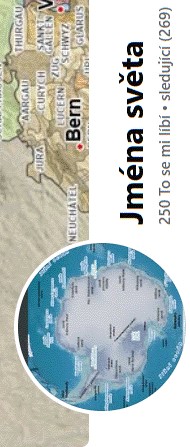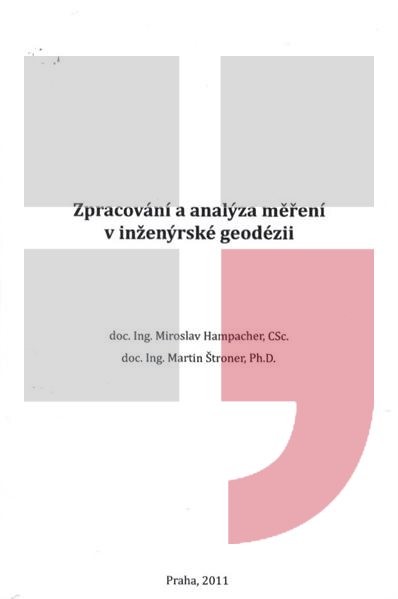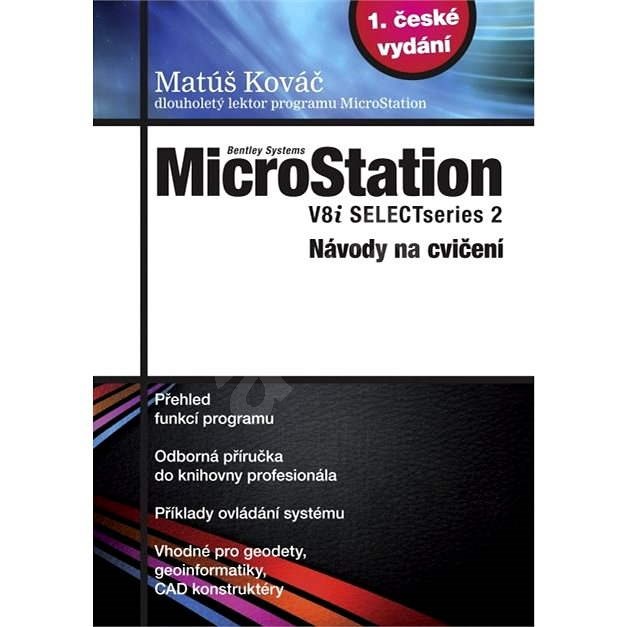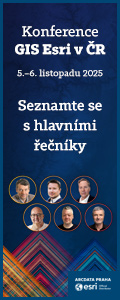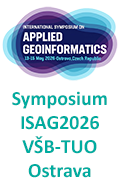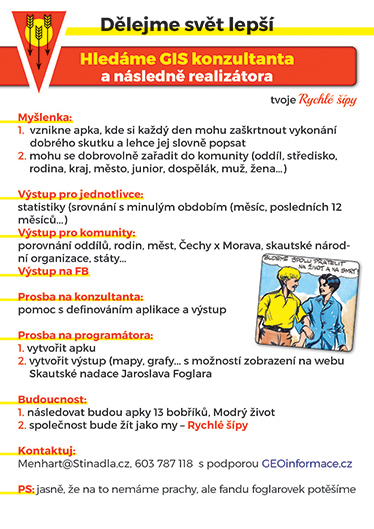zprávy
zdroje zpráv:Adresní body ČSÚ
30.3.2016 2:00 Cenia - Katalog metadat ČR - INSPIRE Služba zobrazuje adresní body, které reprezentují adresní místo tak, aby byl blízký reálnému vchoduPoprvé v geodézii. Rozhovor s Janem Floriánkem
29.3.2016 20:46 GeoBusiness Jan Floriánek nastoupil do firmy Hrdlička hned po absolvování oboru Geodézie a kartografie na Stavební fakultě ČVUT v Praze. Po dvaceti letech práce mu Martin Hrdlička, majitel stejnojmenné firmy se 130 zaměstnanci, předal 1. ledna 2016 vedení. Hrdlička je tak první firmou v oboru geodézie, kdy se majitel-zakladatel zbavil přímého vedení. Zeptali jsme se proto Jana Floriánka na důvody, očekávání a jeho plány ve firmě. Proč se majitel a dlouholetý ředitel firmy rozhodl předat vedení právě tobě? U nás nejde o „blesk z čistého nebe“. Martin Hrdlička dlouhodobě operativní řízení společnosti postupně převáděl na své kolegy, tedy na měPoprvé v geodézii. Rozhovor s Janem Floriánkem
29.3.2016 20:46 GeoBusinessJan Floriánek nastoupil do firmy Hrdlička hned po absolvování oboru Geodézie a kartografie na Stavební fakultě ČVUT v Praze. Po dvaceti letech práce mu Martin Hrdlička, majitel stejnojmenné firmy se…
The post Poprvé v geodézii. Rozhovor s Janem Floriánkem appeared first on GeoBusiness.
Poprvé v geodézii. Rozhovor s Janem Floriánkem
29.3.2016 20:46 GeoBusiness Jan Floriánek nastoupil do firmy Hrdlička hned po absolvování oboru Geodézie a kartografie na Stavební fakultě ČVUT v Praze. Po dvaceti letech práce mu Martin Hrdlička, majitel stejnojmenné firmy se 130 zaměstnanci, předal 1. ledna 2016 vedení. Hrdlička je tak první firmou v oboru geodézie, kdy se majitel-zakladatel zbavil přímého vedení. Zeptali jsme se proto Jana Floriánka na důvody, očekávání a jeho plány ve firmě. Proč se majitel a dlouholetý ředitel firmy rozhodl předat vedení právě tobě? U nás nejde o „blesk z čistého nebe“. Martin Hrdlička dlouhodobě operativní řízení společnosti postupně převáděl na své kolegy, tedy na mě jakoPoprvé v geodézii. Rozhovor s Janem Floriánkem
29.3.2016 20:46 GeoBusiness Jan Floriánek nastoupil do firmy Hrdlička hned po absolvování oboru Geodézie a kartografie na Stavební fakultě ČVUT v Praze. Po dvaceti letech práce mu Martin Hrdlička, majitel stejnojmenné firmy se…Poprvé v geodézii. Rozhovor s Janem Floriánkem
29.3.2016 20:46 GeoBusiness Jan Floriánek nastoupil do firmy Hrdlička hned po absolvování oboru Geodézie a kartografie na Stavební fakultě ČVUT v Praze. Po dvaceti letech práce mu Martin Hrdlička, majitel stejnojmenné firmy se…Kosmická anténa silná jako list papíru
29.3.2016 13:48 Český Kosmický PortálZcela nový typ velké kosmické antény byl otestovaný v plně realistických podmínkách vesmírného prostředí. Parabolická anténa o průměru 5 m byla umístěna do simulátoru ESA LSS (Large Space Simulator). Anténa vypadá jako průhledná, protože je silná jen několik desetin milimetru - je tedy tenčí, než papír.
vedoucí oddělení aktualizace KN II.
29.3.2016 13:39 ČÚZK - předpisy a opatření /Urady/Katastralni-urady/Katastralni-urady/Katastralni-urad-pro-Vysocinu/Katastralni-pracoviste/KP-Havlickuv-Brod/O-uradu/Aktuality/vedouci-oddeleni-aktualizace-KN-IIvedoucí oddělení aktualizace KN II.
29.3.2016 13:39 ČÚZK /Urady/Katastralni-urady/Katastralni-urady/Katastralni-urad-pro-Vysocinu/Katastralni-pracoviste/KP-Havlickuv-Brod/O-uradu/Aktuality/vedouci-oddeleni-aktualizace-KN-IIvedoucí oddělení aktualizace KN I.
29.3.2016 13:38 ČÚZK - předpisy a opatření /Urady/Katastralni-urady/Katastralni-urady/Katastralni-urad-pro-Vysocinu/Katastralni-pracoviste/KP-Havlickuv-Brod/O-uradu/Aktuality/vedouci-oddeleni-aktualizace-KN-Ivedoucí oddělení aktualizace KN I.
29.3.2016 13:38 ČÚZK /Urady/Katastralni-urady/Katastralni-urady/Katastralni-urad-pro-Vysocinu/Katastralni-pracoviste/KP-Havlickuv-Brod/O-uradu/Aktuality/vedouci-oddeleni-aktualizace-KN-Ivedoucí oddělení dokumentace KN
29.3.2016 13:36 ČÚZK - předpisy a opatření /Urady/Katastralni-urady/Katastralni-urady/Katastralni-urad-pro-Vysocinu/Katastralni-pracoviste/KP-Havlickuv-Brod/O-uradu/Aktuality/vedouci-oddeleni-dokumentace-KNvedoucí oddělení dokumentace KN
29.3.2016 13:36 ČÚZK /Urady/Katastralni-urady/Katastralni-urady/Katastralni-urad-pro-Vysocinu/Katastralni-pracoviste/KP-Havlickuv-Brod/O-uradu/Aktuality/vedouci-oddeleni-dokumentace-KNvedoucí oddělení právní vztahy k nemovitostem
29.3.2016 13:34 ČÚZK /Urady/Katastralni-urady/Katastralni-urady/Katastralni-urad-pro-Vysocinu/Katastralni-pracoviste/KP-Havlickuv-Brod/O-uradu/Aktuality/vedouci-oddeleni-pravni-vztahy-k-nemovitostemvedoucí oddělení právní vztahy k nemovitostem
29.3.2016 13:34 ČÚZK - předpisy a opatření /Urady/Katastralni-urady/Katastralni-urady/Katastralni-urad-pro-Vysocinu/Katastralni-pracoviste/KP-Havlickuv-Brod/O-uradu/Aktuality/vedouci-oddeleni-pravni-vztahy-k-nemovitostemOdborný rada – vedoucí oddělení aktualizace KN II.
29.3.2016 13:28 ČÚZK /Urady/Katastralni-urady/Katastralni-urady/Katastralni-urad-pro-Vysocinu/Uredni-deska/Oznameni-a-jina-uredni-sdeleni/Volna-mista/Odborny-rada-–-vedouci-oddeleni-aktualizace-KN-IIOdborný rada – vedoucí oddělení aktualizace KN II.
29.3.2016 13:28 ČÚZK - volná místa /Urady/Katastralni-urady/Katastralni-urady/Katastralni-urad-pro-Vysocinu/Uredni-deska/Oznameni-a-jina-uredni-sdeleni/Volna-mista/Odborny-rada-–-vedouci-oddeleni-aktualizace-KN-IIOdborný rada – vedoucí oddělení aktualizace KN II.
29.3.2016 13:28 ČÚZK - předpisy a opatření /Urady/Katastralni-urady/Katastralni-urady/Katastralni-urad-pro-Vysocinu/Uredni-deska/Oznameni-a-jina-uredni-sdeleni/Volna-mista/Odborny-rada-–-vedouci-oddeleni-aktualizace-KN-IIGround-based Galileo satellite joins post-launch dress rehearsal
29.3.2016 13:25 ESA Navigation
The navigation satellite set to become the 16th in the Galileo constellation has been taken through a Europe-wide rehearsal for its launch and early operations in space.
Odborný rada – vedoucí oddělení aktualizace KN I.
29.3.2016 13:23 ČÚZK - volná místa /Urady/Katastralni-urady/Katastralni-urady/Katastralni-urad-pro-Vysocinu/Uredni-deska/Oznameni-a-jina-uredni-sdeleni/Volna-mista/Odborny-rada-–-vedouci-oddeleni-aktualizace-KN-IOdborný rada – vedoucí oddělení aktualizace KN I.
29.3.2016 13:23 ČÚZK /Urady/Katastralni-urady/Katastralni-urady/Katastralni-urad-pro-Vysocinu/Uredni-deska/Oznameni-a-jina-uredni-sdeleni/Volna-mista/Odborny-rada-–-vedouci-oddeleni-aktualizace-KN-IOdborný rada – vedoucí oddělení aktualizace KN I.
29.3.2016 13:23 ČÚZK - předpisy a opatření /Urady/Katastralni-urady/Katastralni-urady/Katastralni-urad-pro-Vysocinu/Uredni-deska/Oznameni-a-jina-uredni-sdeleni/Volna-mista/Odborny-rada-–-vedouci-oddeleni-aktualizace-KN-IOdborný rada – vedoucí oddělení dokumentace KN.
29.3.2016 13:19 ČÚZK - volná místa /Urady/Katastralni-urady/Katastralni-urady/Katastralni-urad-pro-Vysocinu/Uredni-deska/Oznameni-a-jina-uredni-sdeleni/Volna-mista/Odborny-rada-–-vedouci-oddeleni-dokumentace-KNOdborný rada – vedoucí oddělení dokumentace KN.
29.3.2016 13:19 ČÚZK /Urady/Katastralni-urady/Katastralni-urady/Katastralni-urad-pro-Vysocinu/Uredni-deska/Oznameni-a-jina-uredni-sdeleni/Volna-mista/Odborny-rada-–-vedouci-oddeleni-dokumentace-KNOdborný rada – vedoucí oddělení dokumentace KN.
29.3.2016 13:19 ČÚZK - předpisy a opatření /Urady/Katastralni-urady/Katastralni-urady/Katastralni-urad-pro-Vysocinu/Uredni-deska/Oznameni-a-jina-uredni-sdeleni/Volna-mista/Odborny-rada-–-vedouci-oddeleni-dokumentace-KNOdborný rada – vedoucí oddělení právní vztahy k nemovitostem.
29.3.2016 13:13 ČÚZK - volná místa /Urady/Katastralni-urady/Katastralni-urady/Katastralni-urad-pro-Vysocinu/Uredni-deska/Oznameni-a-jina-uredni-sdeleni/Volna-mista/Odborny-rada-–-vedouci-oddeleni-pravni-vztahy-k-neOdborný rada – vedoucí oddělení právní vztahy k nemovitostem.
29.3.2016 13:13 ČÚZK /Urady/Katastralni-urady/Katastralni-urady/Katastralni-urad-pro-Vysocinu/Uredni-deska/Oznameni-a-jina-uredni-sdeleni/Volna-mista/Odborny-rada-–-vedouci-oddeleni-pravni-vztahy-k-neOdborný rada – vedoucí oddělení právní vztahy k nemovitostem.
29.3.2016 13:13 ČÚZK - předpisy a opatření /Urady/Katastralni-urady/Katastralni-urady/Katastralni-urad-pro-Vysocinu/Uredni-deska/Oznameni-a-jina-uredni-sdeleni/Volna-mista/Odborny-rada-–-vedouci-oddeleni-pravni-vztahy-k-neNabídka volných míst
29.3.2016 9:07 ČÚZK - předpisy a opatření /Urady/Katastralni-urady/Katastralni-urady/Katastralni-urad-pro-hlavni-mesto-Prahu/O-uradu/Aktuality/Nabidka-volnych-mistNabídka volných míst
29.3.2016 9:07 ČÚZK /Urady/Katastralni-urady/Katastralni-urady/Katastralni-urad-pro-hlavni-mesto-Prahu/O-uradu/Aktuality/Nabidka-volnych-mistvedoucí oddělení informací z KN
29.3.2016 9:01 ČÚZK - předpisy a opatření /Urady/Katastralni-urady/Katastralni-urady/Katastralni-urad-pro-hlavni-mesto-Prahu/Uredni-deska/Oznameni-a-jina-uredni-sdeleni/Volna-mista/vedouci-oddeleni-informaci-z-KNvedoucí oddělení informací z KN
29.3.2016 9:01 ČÚZK /Urady/Katastralni-urady/Katastralni-urady/Katastralni-urad-pro-hlavni-mesto-Prahu/Uredni-deska/Oznameni-a-jina-uredni-sdeleni/Volna-mista/vedouci-oddeleni-informaci-z-KNvedoucí oddělení informací z KN
29.3.2016 9:01 ČÚZK - volná místa /Urady/Katastralni-urady/Katastralni-urady/Katastralni-urad-pro-hlavni-mesto-Prahu/Uredni-deska/Oznameni-a-jina-uredni-sdeleni/Volna-mista/vedouci-oddeleni-informaci-z-KNvedoucí právního oddělení XI.
29.3.2016 8:59 ČÚZK - volná místa /Urady/Katastralni-urady/Katastralni-urady/Katastralni-urad-pro-hlavni-mesto-Prahu/Uredni-deska/Oznameni-a-jina-uredni-sdeleni/Volna-mista/vedouci-pravniho-oddeleni-XIvedoucí právního oddělení XI.
29.3.2016 8:59 ČÚZK /Urady/Katastralni-urady/Katastralni-urady/Katastralni-urad-pro-hlavni-mesto-Prahu/Uredni-deska/Oznameni-a-jina-uredni-sdeleni/Volna-mista/vedouci-pravniho-oddeleni-XIvedoucí právního oddělení XI.
29.3.2016 8:59 ČÚZK - předpisy a opatření /Urady/Katastralni-urady/Katastralni-urady/Katastralni-urad-pro-hlavni-mesto-Prahu/Uredni-deska/Oznameni-a-jina-uredni-sdeleni/Volna-mista/vedouci-pravniho-oddeleni-XIvedoucí právního oddělení VI.
29.3.2016 8:58 ČÚZK - volná místa /Urady/Katastralni-urady/Katastralni-urady/Katastralni-urad-pro-hlavni-mesto-Prahu/Uredni-deska/Oznameni-a-jina-uredni-sdeleni/Volna-mista/vedouci-pravniho-oddeleni-VIvedoucí právního oddělení VI.
29.3.2016 8:58 ČÚZK /Urady/Katastralni-urady/Katastralni-urady/Katastralni-urad-pro-hlavni-mesto-Prahu/Uredni-deska/Oznameni-a-jina-uredni-sdeleni/Volna-mista/vedouci-pravniho-oddeleni-VIvedoucí právního oddělení VI.
29.3.2016 8:58 ČÚZK - předpisy a opatření /Urady/Katastralni-urady/Katastralni-urady/Katastralni-urad-pro-hlavni-mesto-Prahu/Uredni-deska/Oznameni-a-jina-uredni-sdeleni/Volna-mista/vedouci-pravniho-oddeleni-VIvedoucí právního oddělení I.
29.3.2016 8:57 ČÚZK - volná místa /Urady/Katastralni-urady/Katastralni-urady/Katastralni-urad-pro-hlavni-mesto-Prahu/Uredni-deska/Oznameni-a-jina-uredni-sdeleni/Volna-mista/vedouci-pravniho-oddeleni-Ivedoucí právního oddělení I.
29.3.2016 8:57 ČÚZK /Urady/Katastralni-urady/Katastralni-urady/Katastralni-urad-pro-hlavni-mesto-Prahu/Uredni-deska/Oznameni-a-jina-uredni-sdeleni/Volna-mista/vedouci-pravniho-oddeleni-Ivedoucí právního oddělení I.
29.3.2016 8:57 ČÚZK - předpisy a opatření /Urady/Katastralni-urady/Katastralni-urady/Katastralni-urad-pro-hlavni-mesto-Prahu/Uredni-deska/Oznameni-a-jina-uredni-sdeleni/Volna-mista/vedouci-pravniho-oddeleni-IINSPIRE téma Parcely (CP)
29.3.2016 2:00 Cenia - Katalog metadat ČR - INSPIRE Data odpovídají směrnici INSPIRE pro téma katastrální parcely (CP). Vychází z katastrální mapy, která je závazným státním mapovým dílem velkého měřítka, obsahuje body polohového bodového pole, polohopis a popis a může mít formu digitální mapy, analogové mapy nebo digitalizované mapy. Data publikovaná v rámci INSPIRE obsahují pouze katastrální území (pro celou Českou Republiku) a parcely a jejich hranice z území, kde je digitální mapa (k 28. 03. 2016 je to 82,50% území České republiky, t.j. 65 061,62km2). Více katastrální zákon 256/2013 Sb., katastrální vyhláška č.357/2013 Sb. v platném znění a INSPIRE Data Specification on Cadastral Parcels v 3.0.1.INSPIRE téma Adresy (AD)
29.3.2016 2:00 Cenia - Katalog metadat ČR - INSPIRE Data odpovídají směrnici INSPIRE pro téma adresy (AD). Vychází především z projektu RÚIAN (Registr územní identifikace, adres a nemovitostí), který je součástí základních registrů České Republiky a obsahuje informace o územní identifikaci, adresách a nemovitostech. Data publikovaná v rámci INSPIRE obsahují pouze adresní místa a jejich komponenty, kterými jsou stát, obec, část obce, městský obvod v Praze (MOP), městký obvod/městská část (MO/MČ), ulice a pošta a to na území celé České Republiky. Obsahují rozvněž geometrii, která určuje definiční bod adresního místa. V datové sadě nění uvedeno 2,96%, t.j. 85897 adresních míst (k 28. 03. 2016), protože neobsahují definiční bod, podle kterého by je bylo možné prostorově určit. Více v zákoně č. 111/2009 Sb., o základních registrech a ve vyhlášce č. 359/2011 Sb., o základním registru územní identifikace, adres a nemovitostí v platných zněních a INSPIRE Data Specification on Addresses v 3.0.1 z 26.4.2010.Katastrální mapa - rastrová
29.3.2016 2:00 Cenia - Katalog metadat ČR - INSPIRE Katastrální mapa je závazným státním mapovým dílem velkého měřítka, obsahuje body polohového bodového pole, polohopis a popis. Katastrální mapa v rastrové podobě je poskytována za úplatu a obsahuje analogovou mapu s kompletní kresbou. Analogová mapa pokrývá 12,92 % území České republiky, což je 10 190,23km2. Více katastrální vyhláška č.357/2013 Sb. v platném znění.Katastrální mapa - vektorová
29.3.2016 2:00 Cenia - Katalog metadat ČR - INSPIRE Katastrální mapa je závazným státním mapovým dílem velkého měřítka, obsahuje body polohového bodového pole, polohopis a popis. Katastrální mapa ve vektorové podobě je poskytována zdarma ve formátu DGN a obsahuje prvky Digitální katastrální mapy (DKM) a Katastrální mapy digitalizované (KMD), tedy bodová pole, budovy, další prvky mapy, hranice parcel, katastrální hranice, parcely katastru nemovitostí, prvky orientační mapy a hranice věcného břemene. Z důvodu použití formátu DGN produkt neobsahuje značky na liniích a oblouky jsou nahrazeny lomenými čárami. U vztažného bodu popisných textů a parcelních čísel dochází k posunu o vzdálenost mezi vztažným bodem textu a bodem ve středu popisného textu. Katastrální mapa ve vektorové podobě k 28. 03. 2016 pokrývá 82,50% území České republiky, t.j. 65 061,62km2. Více katastrální vyhláška č.357/2013 Sb. v platném znění.WMS INSPIRE Habitaty a druhy
29.3.2016 2:00 Cenia - Katalog metadat ČR - INSPIRE Služba zobrazuje rozšíření přírodních stanovišť a evropsky významných druhů v polích síťového mapování (síť ETRS, pole 10 x 10 km) v České republice. Publikováno je rozšíření stanovené k roku 2013. © AOPK ČRKrajinné památkové zóny - plošná identifikace
29.3.2016 2:00 Cenia - Katalog metadat ČR - INSPIRE Polygonové vymezení krajinných památkových zón.INSPIRE téma Budovy (BU)
29.3.2016 2:00 Cenia - Katalog metadat ČR - INSPIRE Data odpovídají směrnici INSPIRE pro téma budovy (BU). Data pochází částečně z projektu RÚIAN (Registr územní identifikace, adres a nemovitostí), který je součástí základních registrů České Republiky a obsahuje informace o územní identifikaci, adresách a nemovitostech, a částečně z ISKN (Informační systém katastru nemovistostí). Zdrojem informací o budovách v ISKN je objekt Stavba, v RÚIAN je to Stavební objekt. Většina Staveb je zároveň Stavebními objekty, ale jsou případy, kdy tomu tak není. Kromě Budov datová sada obsahuje i části budov, které jsou pro potřeby INSPIRE vyjádřeny vchody z RÚIAN. Vchody obsahují informace o počtu podlaží, technickoekonomických atributech apod. Datová sada pokrývá celé území české republiky. V datové sadě není uvedeno 2,25%, t.j. 94452 budov (k 28. 03. 2016), protože neobsahují definiční bod ani polygon. Více v zákoně č. 111/2009 Sb., o základních registrech, ve vyhlášce č. 359/2011 Sb., o základním registru územní identifikace, adres a nemovitostí v platných zněních, v zákoně 256/2013 Sb., o katastru nemovitostí, v katastrální vyhlášce č. 357/2013 Sb. v platném znění a INSPIRE Data Specification on Buildings v 3.0 z 13.12.2013.GISáček 2016 - výsledky
28.3.2016 7:00 Česká asociace pro geoinformace Tradiční soutěž studentských prací GISáček zná své vítěze! Výsledky letošního ročníku stejně jako fotografie z akce naleznete na webuWashington State Department of Transportation Uses 3D Immersive Visualization
27.3.2016 20:10 Bentley SystemsPress Coverage
Informed Infrastructure, USA
Read the articleOtevřená data veřejné správy pomáhají byznysu i výzkumu
26.3.2016 21:49 Různé Veřejné informace bude možné využívat i pro komerční využití„Veřejná správa disponuje řadou publikovatelných informací, které je možné využít v rámci podnikatelské činnosti,“ uvedl pro HN Petr Mlsna, náměstek ministra vnitra pro řízení sekce legislativy a archivnictví.
ProjectWise Kept HDR Organized While Building Texas' First Modern Streetcar System
25.3.2016 20:34 Bentley SystemsPress Coverage
MicroStation Connections, USA
Read the articleEtosha
25.3.2016 10:05 ESA Observing the Earth
Earth observation image of the week: a Sentinel-2A image of the Etosha salt pan, also featured on the Earth from Space video programme
Výstava Mapy ostrovů dostupná na webu
25.3.2016 5:06 Zeměměřič Zeměměřický úřad srdečně zve vechny, kteří nestihli přijít na výstavu v Budově zeměměřických a katastrálních úřadů přepáková hala (15. 2. a 15. 3. 2016), na virtuální prohlídku výstavy.Bentley Systems, Inc. CEO to present how Technology was used for the Pope’s Visit to Philadelphia
24.3.2016 19:20 Bentley SystemsPress Coverage
SPAR Point Group, USA
Read the articleEarth from Space
24.3.2016 14:00 ESA Observing the Earth
Join us Friday, 25 March, at 10:00 CET for the ‘Earth from Space’ video programme. This week features a Sentinel-2A image of the Etosha salt pan in Namibia
Referent KN – poskytování informací KN
24.3.2016 13:27 ČÚZK /Urady/Katastralni-urady/Katastralni-urady/Katastralni-urad-pro-hlavni-mesto-Prahu/Uredni-deska/Oznameni-a-jina-uredni-sdeleni/Volna-mista/Referent-KN-–-poskytovani-informaci-KNReferent KN – poskytování informací KN
24.3.2016 13:27 ČÚZK - předpisy a opatření /Urady/Katastralni-urady/Katastralni-urady/Katastralni-urad-pro-hlavni-mesto-Prahu/Uredni-deska/Oznameni-a-jina-uredni-sdeleni/Volna-mista/Referent-KN-–-poskytovani-informaci-KNReferent KN – poskytování informací KN
24.3.2016 13:27 ČÚZK - volná místa /Urady/Katastralni-urady/Katastralni-urady/Katastralni-urad-pro-hlavni-mesto-Prahu/Uredni-deska/Oznameni-a-jina-uredni-sdeleni/Volna-mista/Referent-KN-–-poskytovani-informaci-KNZmrzlá údolí na Marsu
24.3.2016 12:47 Český Kosmický PortálZasazena mezi roztříštěné okraje obrovské dopadové pánve na Mars jsou údolí pokrytá námrazou.
Nově bylo uveřejněno cca 30 da
24.3.2016 12:00 Plzeňský kraj Nově bylo uveřejněno cca 30 dalších územně plánovacích dokumentací obcí a jejich změn formou mapových služeb. Vyhledat příslušnou územně plánovací dokumentaci můžete v sekci Územní plánování » Obce v kraji » Územní plány a další nástroje územního plánování (http://geoportal.plzensky-kraj.cz/gs/uzemni-plany-a-dalsi-nastroje-uzemniho-planovani/). Nově jsou například uveřejněny dokumentace těchto obcí: Bor, Bukovec, Horní Lukavice, Horská Kvilda, Hostouň, Chlum (Rokycany), Klabava, Kočov, Kovčín, Lhota pod Radčem, Lisov, Manětín, Merklín, Mešno, Mirošov, Mnichov, Nemanice, Němčice, Nová Ves (Domažlice), Pačejov, Pasečnice, Těškov, Trhanov, Ves Touškov, Všekary a Zahrádka a řada změna a územních studií. Nově jsou k dispozici i skenované dokumentace obcí: Krašovice, Lochousice, Třemošná, Stříbro, Přestavlky, Trnová a Nebílovy.Nově bylo uveřejněno cca 30 da
24.3.2016 12:00 Plzeňský kraj Nově bylo uveřejněno cca 30 dalších územně plánovacích dokumentací obcí a jejich změn formou mapových služeb. Vyhledat příslušnou územně plánovací dokumentaci můžete v sekci Územní plánování » Obce v kraji » Územní plány a další nástroje územního plánování. Nově jsou například uveřejněny dokumentace těchto obcí: Bor, Bukovec, Horní Lukavice, Horská Kvilda, Hostouň, Chlum (Rokycany), Klabava, Kočov, Kovčín, Lhota pod Radčem, Lisov, Manětín, Merklín, Mešno, Mirošov, Mnichov, Nemanice, Němčice, Nová Ves (Domažlice), Pačejov, Pasečnice, Těškov, Trhanov, Ves Touškov, Všekary a Zahrádka a řada změna a územních studií. Nově jsou k dispozici i skenované dokumentace obcí: Krašovice, Lochousice, Třemošná, Stříbro, Přestavlky, Trnová a Nebílovy.Vrchní referent / rada v oddělení aktualizace katastru nemovitostí Katastrálního pracoviště Trut
24.3.2016 11:32 ČÚZK - volná místa /Urady/Katastralni-urady/Katastralni-urady/Katastralni-urad-pro-Kralovehradecky-kraj/Uredni-deska/Oznameni-a-jina-uredni-sdeleni/Volna-mista/Vrchni-referent-rada-v-oddeleni-aktualizace-ka-(1)Vrchní referent / rada v oddělení aktualizace katastru nemovitostí Katastrálního pracoviště Trutnov
24.3.2016 11:32 ČÚZK - předpisy a opatření /Urady/Katastralni-urady/Katastralni-urady/Katastralni-urad-pro-Kralovehradecky-kraj/Uredni-deska/Oznameni-a-jina-uredni-sdeleni/Volna-mista/Vrchni-referent-rada-v-oddeleni-aktualizace-ka-(1)Vrchní referent / rada v oddělení aktualizace katastru nemovitostí Katastrálního pracoviště Trutnov
24.3.2016 11:32 ČÚZK - volná místa /Urady/Katastralni-urady/Katastralni-urady/Katastralni-urad-pro-Kralovehradecky-kraj/Uredni-deska/Oznameni-a-jina-uredni-sdeleni/Volna-mista/Vrchni-referent-rada-v-oddeleni-aktualizace-ka-(1)Vrchní referent / rada v oddělení aktualizace katastru nemovitostí Katastrálního pracoviště Trut
24.3.2016 11:32 ČÚZK - předpisy a opatření /Urady/Katastralni-urady/Katastralni-urady/Katastralni-urad-pro-Kralovehradecky-kraj/Uredni-deska/Oznameni-a-jina-uredni-sdeleni/Volna-mista/Vrchni-referent-rada-v-oddeleni-aktualizace-ka-(1)Vrchní referent / rada v oddělení aktualizace katastru nemovitostí Katastrálního pracoviště Trutnov
24.3.2016 11:32 ČÚZK /Urady/Katastralni-urady/Katastralni-urady/Katastralni-urad-pro-Kralovehradecky-kraj/Uredni-deska/Oznameni-a-jina-uredni-sdeleni/Volna-mista/Vrchni-referent-rada-v-oddeleni-aktualizace-ka-(1)ČGS – Blok expertů MRS 30. 3. 2016
24.3.2016 10:36 Katedra geografie UP Olomouc Zveme Vás na přednášku v rámci Bloku expertů MRSObčanská společnost a legitimizace státnosti v zamrzlých konfliktech v postsovětském prostoru
která se uskuteční ve středu 30. března 2016 od 15.00 do 16.30 na učebně LP 5007 Přírodovědecké fakulty UP. Přednáší Tomáš Hoch (pozvánka).
V novém čísle britského časopisu GeoConnexion Jakubův článek o mapování Sněžky
24.3.2016 8:09 UpVision V novém dubnovém čísle britského časopisu GeoConnexion, jednoho z největších světových GEO komerčních časopisů, vyšel Jakubův článek o našem mapování Sněžky z UAV.Více zde:
https://plus.google.com/+UpvisionCz1/posts/1S7CQVUnKuD
Mapa radonového indexu ČR 1 : 50 000
24.3.2016 1:00 Cenia - Katalog metadat ČR - INSPIRE WMS služba zobrazuje výsledky mapování radonového indexu na území České republiky v měřítku 1 : 50 000.Výdej prostorových informací ÚAP
24.3.2016 1:00 Cenia - Katalog metadat ČR - INSPIRE Mapová aplikace zpřístupňuje údaje o území pro jednotlivé jevy, které z pověření MŽP poskytuje ČGS orgánům územního plánování v souladu se zákonem č. 183/2006 Sb. (stavební zákon). Autorizovaným uživatelům umožňuje takto bezplatně získat data ve formátu shp a generovat elektronicky podepsaný pasport. Podle Standardu sledovaných jevů pro územně analytické podklady (UAP), který rozpracovává Přílohu č. 1, část A, vyhlášky MMR č. 500/2006 Sb. jde o: chráněné ložiskové území, chráněné území pro zvláštní zásahy do zemské kůry, ložisko nerostných surovin, poddolované území, sesuvné území a území jiných geologických rizik, staré důlní dílo.Geotechnical Workflows Extend Beyond Logs and Reports with New Civil Design Interoperability
23.3.2016 19:24 Bentley SystemsPress Coverage
MicroStation Connections
Read the articleForging the Way for Drones in Construction
23.3.2016 19:22 Bentley SystemsPress Coverage
Engineering.com
Read the article


